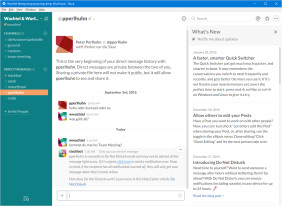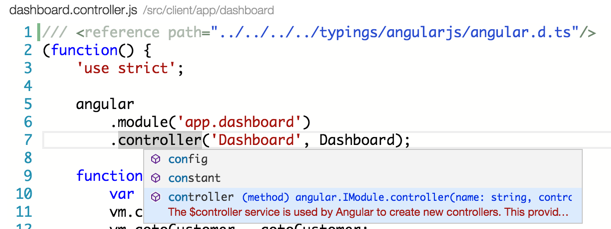Apple’s iMessage platform is getting a notable update with the release of iOS 14 and macOS’s Big Sur. At its virtual Worldwide Developer Conference keynote this morning, Apple announced the. Tour the basics of the Slack app platform. Take a trip through the creation and installation of your first app. Get started building a Slack app, integration, or bot. Endless possibilities. Franz supports a great variety of business and private messaging & chat services like Slack, WhatsApp, WeChat, Messenger, Telegram, Google Hangouts, Skype, Zendesk and many more. It does not matter if you just want to keep in touch with your friends or are managing a multi-seat customer care team. Franz got you covered.
What if Pepper could help you increase your productivity at work? By linking the robot to a Slack channel, we will be able to send and receive messages by voice control thanks to Pepper.
Sending Slack messages via Pepper’s chatbot¶
This article is part of the API Challenge: Quentin, an intern at SBRE, is plugging various third-party technologies (web services or IoT devices) into Pepper. For each technology, he has one week to test it, make a demo on Pepper, and write up his experience. This is a way of checking how easy it is to integrate technology with Pepper.
- Slack is a new way to communicate with your team. It’s faster, better organized, and more secure than email.
- Simplify your team's communication with Zapier’s Slack integration. Zapier integrations, called Zaps, let Slack interact with other apps you use. You can automatically send messages when something happens in another app or use your Slack message to set off automated tasks. You can even use Zaps to spin up homemade, no-code bots.
How much time do you spend at work responding to your emails and messages on the different work-related channels you use? Wouldn’t it be nice to be able to answer these messages by voice while working on more important stuff? Well, thanks to Pepper, this is now something you can do!
For my second mission in the course of the API challenge, I granted my Pepper the ability to send messages I speak to a slack channel. This enhanced my understanding of the different web requests protocols (REST and WebSocket) and credentials handling. It also allowed me to build a sweet and pretty handy application for my personal Pepper, thus extending its abilities along with my experience. Here’s how I proceeded..
1. The Slack API, creating a Slack App and sending messages with Pepper¶
Slack has an inbuilt and yet simple API that is pretty helpful if you want to create apps functioning inside Slack such as chatbots or calendar apps.
I first created a dedicated Slack workspace and channel, not to pollute my coworker's workspace with tests and added an app to that workspace.
After a bit of research on the Slack API’s documentation, looking for a way to create an access between an Android Studio app and this Slack channel and to give the channel’s credentials to my app. I found a pretty easy and direct way to proceed. Indeed, Slack allows you to create, via the app, special URLs called Incoming Webhooks where your Android app can send REST requests in the form of JSON files to the slack app. I used Retrofit to pass a Post request to the webhook URL, similarly to what I did with the Worldwide holiday manager API on the previous article of the API challenge.
When a message is sent from a webhook to the channel, a response is always sent back, even if the message wasn’t correctly sent. This is pretty useful to verify if everything worked as it should. I used this response in a test class. When everything works fine, the response body should always be a single String: “ok”.
Thus, I managed pretty simply to send messages to the channel with voice-command, using a qiChat chatbot and an executor to link my code to it, as usual. If you don’t know how to do that, you should check on the Dev Center’s lesson about linking Qichat and code. And that’s it!

2. Going further: making a dynamic app, alerting you when messages are received¶
Now, thanks to this little app, I don’t have to type my Slack messages anymore which is perfect for a lazy interns like me! But why stop there?
What could be done next would be to enable Pepper to dynamically alert me whenever a user posts a message on the channel and then ask me if I want to answer. Unfortunately, this kind of dynamic interaction between two apps can hardly be done using REST requests, especially since an update from the Slack API which stopped supporting outgoing webhooks. Instead, the Slack API offers two different solutions:
- the Events API;
- the Real Time Manager (RTM) API.
The Event API is used to create a link between the Slack API and an online service located under another URL, this is not our case. So what about the RTM API? It is a WebSocket-based API used to create a “bridge” between your app and the Slack API. If you don’t know what a WebSocket is, this article explains it pretty well.
But, before starting to look for online libraries to use the RTM API on android studio, there is another issue to handle: how to provide credentials (unlike when using the Webhook, which uses a simple auto-generated URL)
I had to dig up a few information in the Slack API documentation. For authentication, Slack uses the OAuth 2.0 protocol. It is a token-based protocol which means that you need a special authentication token to enable the WebSocket connection. I obtained it by accessing a URL containing the app’s client id found in the app’s basic information, the team id found in the workspace information and the scopes you want your app to access.

The final step would be to open the WebSocket and the RTM connexion and to ensure that this connection is correctly made before sending and receiving messages from a Slack channel and you’ll never have to open your Slack tab again!
If you’re willing to learn how this can be done, I invite you to check on the Slack documentation about the RTM API and on these java libraries I found on github:

Whether you’re transitioning your team to or simply want to improve team , consider looking into . Knowing where to start is a challenge, and there are several different programs you can choose from. Some apps may fit your team better than others. This article aims to explain the benefits of one program in particular: Slack.
What is Slack?
Slack is a free-to-use project management software that’s used to promote team communication. It’s primarily a messaging app used for connecting your team together and is available for desktop and mobile devices. Besides messaging, it allows for file sharing and app integration to increase productivity and efficiency. It’s also a useful tool for project managers to view all the communication and progress surrounding the projects they oversee. The following tips and tricks will help you start implementing this app into your team:
1. Create chat channels.
Slack’s main feature is a way to organize chat rooms for different purposes. Channels are completely customizable to your needs and preferences. A channel can be created for each team involved in a project, so relevant conversations can happen in separate locations. This helps prevent one text group from becoming overwhelmed. Channels can also be categorized by a specific project or topic.
Many companies collaborate with each other, and shared channels provide a communication point for multiple groups. This allows partnerships to work together better without releasing more information than is needed. These are valuable relationships, and Slack wants to make sure the flow of communication is constant.
Private channels can be created for limited access. They’re only visible to those who are granted permission to enter them. This can be a place for sensitive information exclusively for managers. I like to use them as a place to store things I might forget. Again, the flexibility of these channels can fit pretty much every need you may have.
Related: 4 Ways You Can Use Hangouts to Optimize Efficiency
2. Keep track of messages.
The purpose of Slack’s chat channels is to organize information and projects to streamline efficiency. Despite all that, important messages can sometimes be lost with time. There are two ways you can resolve this:
- Messages or files that need to be referred to often can be pinned. Pinning a message is simple, and stores the chosen message in an easy-to-access tab.
- A search bar allows you to type in keywords that bring up matching results. If you know what you are looking for, this is a quick way to locate a lost message.
These features make finding information easier than scrolling back through dozens of messages at a time, potentially skipping over the one you need. It’s just another benefit of using Slack to improve your time management.

3. Set Do Not Disturb.
You can get notifications at any time! When you’re ready to turn in for the night, be sure to enable Do Not Disturb so someone else’s productivity doesn’t get in the way of your much-needed sleep. This is especially valuable when working with people in different time zones or with flexible schedules. Sleep deprivation negatively affects your work performance the next day, so it’s important for you to rest when you can.
Related: 6 Tricks You Need to Know About Zoom
4. Connect with your employees.
Slack is good for so much more than communication and organizing. Using its features helps you connect with your employees and share your appreciation for them. Connect your Calendar to Slack and you will receive a notification when it is somebody’s birthday.
Slack Messenger For Windows Download
The direct messaging system in Slack gives you a location to share personal messages with your employees. Some people enjoy receiving praise in public for others to see, which can be done on public channels. For the more introverted, a private message can show you care and appreciate them without making them feel uncomfortable.
Going back to channels, you can decide to create some casual chat rooms for your employees to connect with each other. A positive company atmosphere is important, especially when collaboration is involved. For teams that work remotely, co-workers can feel like nothing more than a name on a screen. Getting to know those names and the stories behind them can help your team foster a strong and a desire to cooperate.
5. Integrate apps.
Slack Messenger Login
Many of the apps your team already use can be integrated with Slack. These include, but are not limited to, Google Drive, , Asana and Zoom. When you use these apps, they follow the pattern of conversation seamlessly. It creates an interactive chat bubble within the channel itself so you don't need to keep every single app open.
Slack Messenger App
The app integration capabilities of Slack also helps declutter your computer. Having too many tabs open may slow down your connection and can make it difficult to find what you need, wasting valuable time. Slack works as an extension for the apps you need and can open up those tabs only when they are needed.

